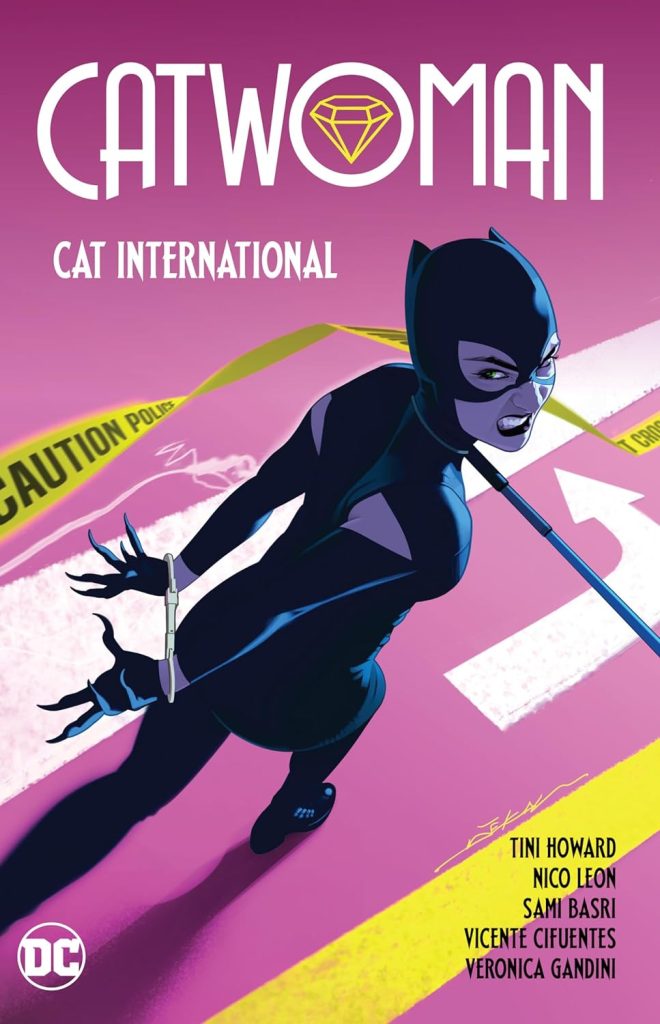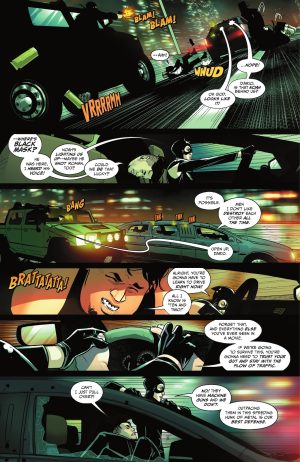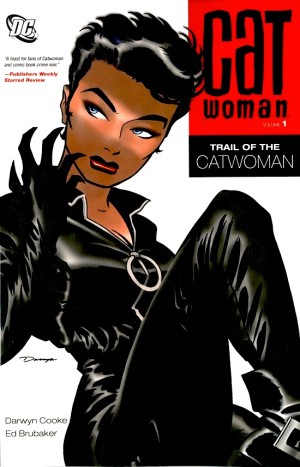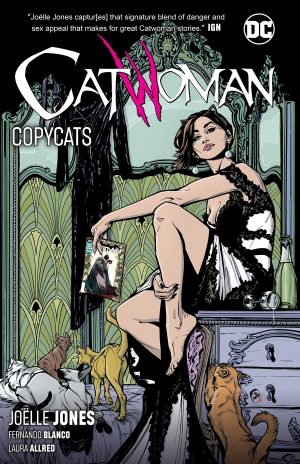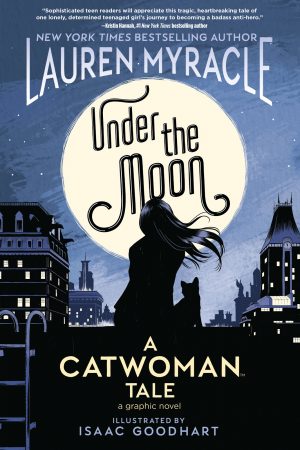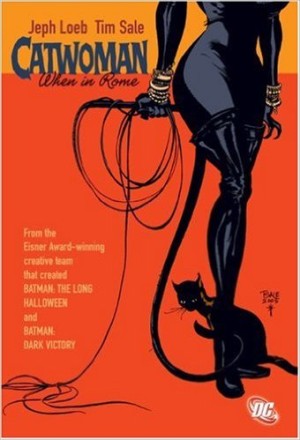Review by Ian Keogh
Tini Howard’s first collection of Catwoman stories was very impressive, showing Gotham’s primary gangsters and how she limits their activities. It seems, though, that crooks will be crooks, and despite what was learned in Dangerous Liaisons, some off-limits activities continue. With the best will in the world Batman’s allies are attempting to help, but their idea of aid complicates matters in the opening chapter.
That’s really the set up for what follows. While Catwoman’s on top of her game, matters have reached a point where a factor she counts on to maintain her hold over the ganglords is no longer as effective, and a big gesture is called for to reset the table. Also crucial, and emphasised more here than last time, is that Gotham’s gangsters are family concerns.
This collection is slightly weaker than Dangerous Liasons on two counts. The first is primary artist Nico Leon only drawing around the half the collection, and while most of the artists stepping in are good, there’s little consistency between them. Catwoman looks very different under Sami Basri’s delicate line than her thin, angular variation supplied by Robbi Rodriguez when the page turns or the big lipped version with her mouth always open drawn by Caitlin Yarsky. Leon remains the star turn and the wished for artist of choice (sample art), his layouts and techniques resulting in better looking pages.
The secondary problem remains masked vigilante Valmont, at least no longer guiding Catwoman, but their relationship is supposed to be flirty and seductive, and the dialogue presenting that is instead smarmy and off-putting. In real life you’d rapidly tire of anyone talking like that, and because it’s so obvious it doesn’t work as movie styled belief suspension. The other possible downside may yet be rectified. It appears as if Catwoman’s looking for the type of excitement she shared with Batman, yet without a control freak in the equation, but a shock is on its way where the relationship is concerned.
There’s a considerable pace from chapter to chapter as Catwoman’s given a different focus for each. Howard presents her as an adaptable problem solver, differentiating her from Batman by a capacity to overlook minor crime, and at home in pretty well any location. That’s just as well considering where she finds herself for an emotionally draining final chapter, and that’s where she remains leading into Duchess of Gotham.
